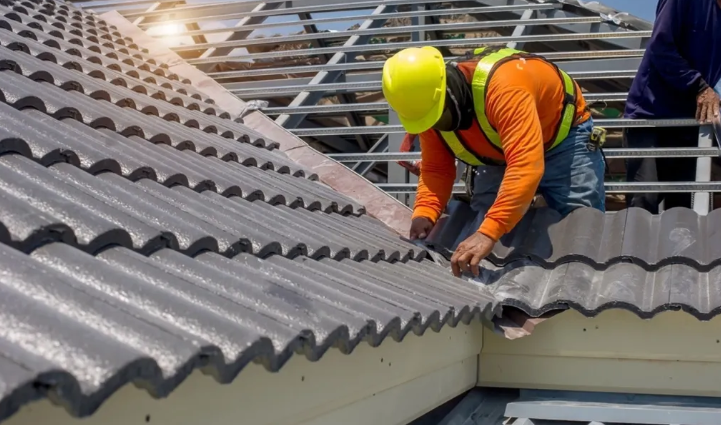Key Takeaways:
- Importance of sustainable roofing materials for eco-friendly homes
- Different types of sustainable roofing solutions
- Benefits of using eco-friendly roofing options
Introduction to Sustainable Roofing
Sustainable roofing is an essential aspect of modern construction. With increasing awareness about the environmental impact of traditional building materials, homeowners and builders are turning to eco-friendly roofing solutions. These options help reduce carbon footprints and offer numerous other benefits, including enhanced energy efficiency and long-term cost savings. For instance, solar shingles are an innovative solution that combines traditional shingles’ durability with solar panels’ energy-producing capabilities.
The rise in demand for green construction materials has led to significant advancements in sustainable roofing solutions. These innovative designs meet environmental and aesthetic requirements, ensuring homes are eco-friendly and visually appealing. Sustainable roofing materials have evolved to provide better performance and longevity, making them a viable option for modern homes.
Types of Sustainable Roofing Materials
For sustainable roofing, a range of materials are available, each with special qualities to suit various requirements and tastes. Here are some popular options:
- Green Roofs: Green roofs, covered with vegetation and soil, provide natural insulation, reduce heat island effects, manage stormwater, improve air quality, and enhance building aesthetics.
- Recycled Shingles: Made from recycled materials like rubber, wood, or plastic, these shingles are durable and environmentally friendly. Recycled shingles can mimic the appearance of traditional roofing materials while offering superior performance and longevity. Using recycled materials, homeowners can reduce their environmental footprint and support the circular economy.
- Cool Roofs: Cool roofs, made from reflective coatings, tiles, and shingles, reduce energy consumption and improve indoor comfort in hot climates by reflecting sunlight and absorbing less heat.
Benefits of Using Eco-Friendly Roofing
Opting for sustainable roofing solutions can provide several advantages beyond environmental benefits. Some of these include:
- Energy Efficiency: Better insulating qualities are a common feature of sustainable roofing, which can lower heating and cooling expenses. For instance, by enhancing a building’s thermal efficiency, cool and green roofs can help reduce energy costs.
- Durability: Many eco-friendly roofing materials are highly durable and require less maintenance over their lifespan. Materials like recycled shingles and metal roofs often have longer lifespans than traditional roofing options, resulting in fewer replacements and less waste.
- Increased Property Value: Homes with sustainable features, including roofing, often have higher resale values due to their energy-efficient and eco-friendly attributes. Eco-friendly homes are increasingly attractive to buyers who are conscious of their environmental impact and are willing to invest in sustainable living.
Economic and Environmental Impact
Adopting sustainable roofing solutions can lead to significant economic and environmental savings. For example, green roofs have been shown to reduce energy costs and stormwater runoff. In contrast, cool roofs can lower urban temperatures and minimize the need for air conditioning. Because they shield roofing membranes from UV rays and high temperatures, green roofs can help increase their longevity.
The environmental benefits of sustainable roofing extend beyond individual homes. Through reducing energy use and greenhouse gas emissions, these technologies aid global efforts to combat climate change. Furthermore, compared to conventional materials, sustainable roofing materials frequently have lower embodied energies, which means less energy is used during production, transportation, and installation.
Choosing the Right Sustainable Roofing Solution
When selecting a sustainable roofing option, it’s important to consider factors like the local climate, building structure, and budget. Consultation with a professional roofing contractor specializing in sustainable materials can help you make an informed decision. Based on the layout and style of the building, they can evaluate your demands and suggest the finest solutions.
Additionally, researching platforms like Energy Saver can provide valuable insights into different sustainable roofing options and their benefits. It’s also helpful to look into government incentives and rebates for installing eco-friendly roofs, as these can offset some initial costs and make sustainable options more affordable.
Conclusion
Sustainable roofing is not just a trend but a necessary step towards creating eco-friendly and energy-efficient homes. Homeowners can enjoy numerous environmental and economic benefits by choosing the right materials and solutions while contributing to a healthier planet.

